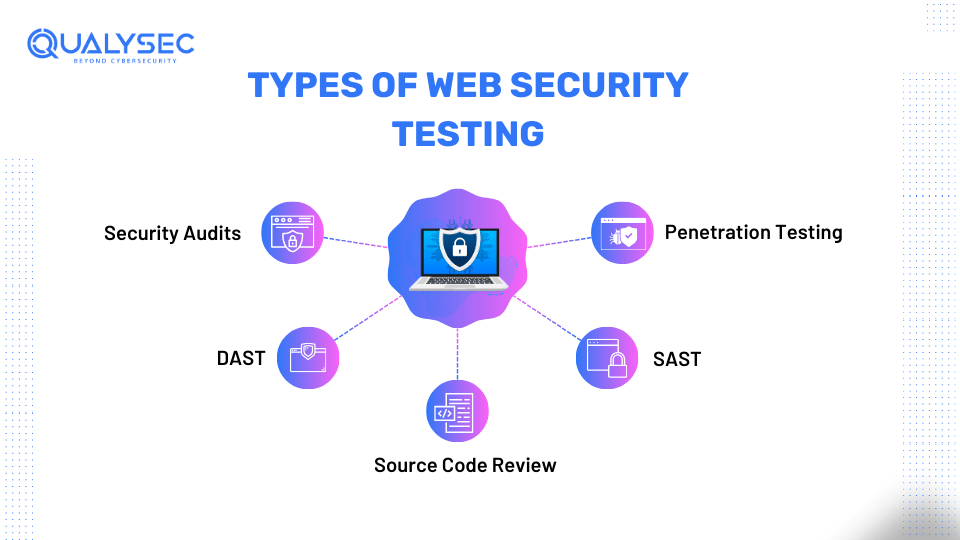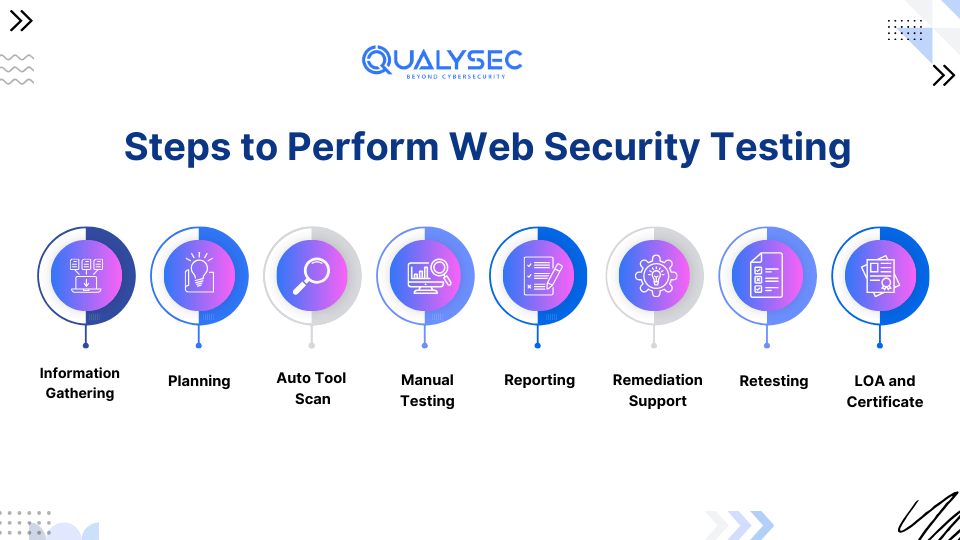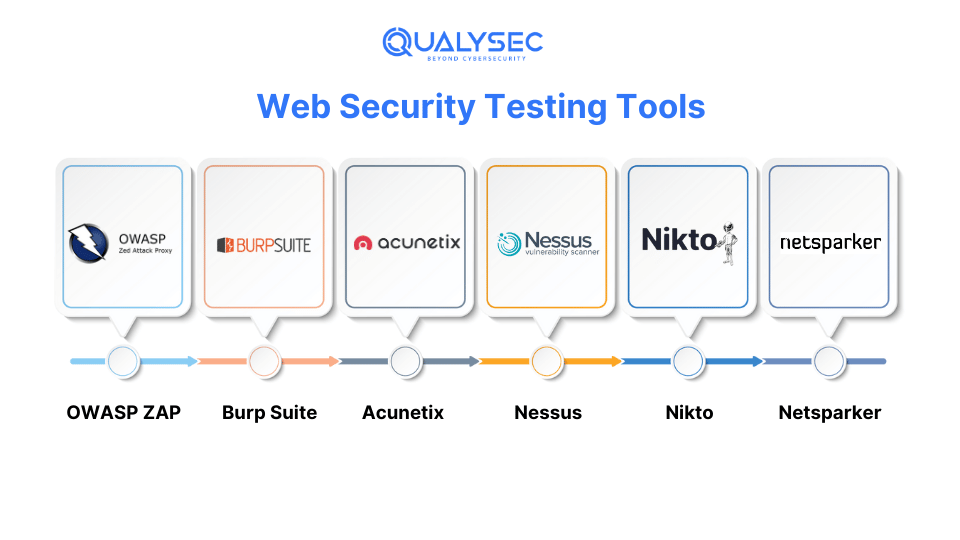In today’s digital world security testing is essential. There is a huge demand for security testing services in the global market and relying on security testing service providers has become a viable option. Therefore, websites that host sensitive information can be at risk without web security testing, and the risk of data breaches increases. This results in companies focusing on and giving the highest priority to firms that provide security testing services.
Security testing is a process to ensure that the data stored on the device is safe and protected. Therefore, this blog aims to be a comprehensive blog on web security testing.
What is Web Security Testing?
It is a process that helps keep the data on a website safe and secure. This helps firms determine their website’s security posture. This also provides, how the website functions while a cyber attack occurs. Additionally, it determines whether the users can depend on the website or not.
It is important to assess the data stored on the website. This process of assessing data has become an essential aspect. Website security testing is focused on identifying and addressing security vulnerabilities. It ensures the website is secure from various threats and breaches. Hence, security testing provides information on how the website is performing.
Why Should You Consider Web Security Testing?
It is an essential process to protect your site from cyber attacks and hence, here are the 5 important reasons why you should consider web security testing:
1. Protection Against Cyber Threats
It is important to identify and mitigate risks. This is an essential step in protecting a website from cyber threats and data breaches. It is important to find these vulnerabilities and fix them before a hacker finds them and exploits them. This in turn helps strengthen the website’s security posture.
2. Data Integrity and Confidentiality
Web security testing ensures data integrity and confidentiality. This is important because many websites store and handle users’ personal information. This personal information is sensitive and if lost can cause users to lose trust in the firm or the businesses.
3. Compliance with Regulations
Website security testing helps firms and businesses follow and maintain compliance. Various firms are required to follow different regulations and laws. Some of these compliance laws are ISO 27001, GDPR, and PCI DSS. Hence, it ensures a website follows these regulations.
4. Maintaining Reputation and Trust
Security breaches must be mitigated. If a security breach is not mitigated, it can severely damage a firm’s reputation. A firm’s reputation when affected can lead to customers losing their trust. Hence, by conducting web security audits, firms can protect their reputation and trust.
5. Preventing Financial Loss
Website security testing plays an important role in avoiding security breaches. A security breach can result in significant financial losses due to data theft for a firm. It helps prevent these incidents helps mitigate risks and strengthens security posture.
Do you want to protect your web app against cyber threats? Connect with experts at QualySec, who offer innovative application security testing services. Our comprehensive approach includes penetration testing and vulnerability scanning to ensure the highest level of security for your digital assets. Secure your digital assets now!
Talk to our Cybersecurity Expert to discuss your specific needs and how we can help your business.
Types of Website Security Testing
Businesses can choose from different types of security testing services. Each type has its way of finding and fixing potential security risks. Web security testing is very important for protecting against cyber threats. Hence, here are some key security testing services for websites that a business can use:

1. Security Audits
Security audits are organized checks to see if a company meets certain security standards. Different regulations require companies to test their security to protect client information regularly. These security audits follow the rules set by regulatory bodies. Therefore, if a company does not comply, it can face penalties or have its operations suspended.
2. Penetration Testing
Website penetration testing, or “pen testing,” is a process in which cybersecurity experts simulate an attack to find weaknesses in a website. The experts identify vulnerabilities that real attackers could exploit. Additionally, this method helps businesses understand their risks and security weaknesses, allowing them to make proactive decisions and improve their security. Hence, after the test, a cybersecurity firm provides a detailed report of the vulnerabilities found.
If you want to know how a pentest report can help your business mitigate vulnerabilities, download our comprehensive and developer-friendly sample report now.
Latest Penetration Testing Report

3. Source Code Review
Source code review is important for making websites secure. Experts find and fix weaknesses in the code that hackers could exploit. This testing ensures the website is secure, which helps prevent data breaches. During a source code review, a cybersecurity expert checks the code line by line for any security risks.
4. SAST
Static Application Security Testing (SAST), also known as static analysis, checks the source code for security problems. This method uses both automated tools and manual reviews. It is useful because it can find issues without needing to run the application. SAST allows security experts to examine the source code line by line to identify and fix security flaws.
5. DAST
Dynamic Application Security Testing (DAST) checks an application from the front end to find weaknesses by simulating attacks. This automated security testing is great for internal, low-risk apps that need to meet regulatory security standards. Hence, it’s best to combine DAST with manual website security testing for common vulnerabilities.
How to Perform Web Security Testing?

- Define Scope: 1st the security testing team defines the goals and objectives of the test, specifying the areas of the website that will be tested.
- Information Gathering: Then the testing team gathers all the necessary information about the website to help understand it.
- Automated Vulnerability Scanning: The testers first use automated web vulnerability scanners to test the website for known vulnerabilities.
- Manual Security / Penetration Testing: Then the testers use their ethical hacking skills to deep dive into the website to find hidden vulnerabilities. They also verify the results of the automated tools.
- Reporting: The results and findings of the tests are documented in detail and shared with the development team for remediation.
- Remediation: The development/security team uses the security testing report to fix all the vulnerabilities present in the website.
- Retesting: The testing team retests the website to check the number of vulnerabilities fixed and those not fixed. This helps the website user to know the current security status.
- Letter of Attestation (LoA): This final document summarizes the entire testing process. It also includes the total number of vulnerabilities identified and fixed and the current security posture of the website.
What are Web Security Testing Tools?

Web security testing tools are various tools that are used to identify and fix security risks in web applications and websites and enhance their security. Hence, here are some commonly used tools:
1. OWASP ZAP (Zed Attack Proxy)
- OWASP ZAP is an open-source web application security scanner.
- Features: Automated scanners, manual testing tools, active and passive scanning.
2. Burp Suite
- Burp Suite is a comprehensive platform for web application security testing.
- Features: Spidering, vulnerability scanning, proxy, and repeater for manual testing.
3. Acunetix
- Acuntix is a commercial web vulnerability scanner.
- Features: Automated scanning, detailed reporting, support for multiple environments (websites, web applications, APIs).
4. Nessus
- Nessus is a widely used vulnerability scanner.
- Features: Network vulnerability scanning, configuration auditing, and asset discovery.
5. Nikto
- An open-source web server scanner.
- Features: Scans for dangerous files, outdated server software, and other vulnerabilities.
6. Netsparker
- Netsparker is an open-source web application security scanner.
- Features: Automated scanning, proof-based scanning to confirm vulnerabilities and detailed reporting.
Conclusion
Web security testing is a process that ensures that the web application is secured and all the vulnerabilities are mitigated. Hence, firms and businesses need to ensure that they conduct web security testing through third-party firms regularly.
Qualysec a leading cybersecurity firm, specializes in providing website security testing services to businesses. Hence, opting for Qualysec can help firms mitigate vulnerabilities and follow various compliance regulations.
Check out our recent article on what Web Application Penetration Testing is and why it is necessary.
FAQs
Q. What is website security testing?
A: It is a process that checks web applications and websites for security weaknesses that hackers could exploit. Hence, it ensures that the application is safe and protected from cyber threats.
Q. Why is web security testing important?
A: It is important because it helps organizations find and fix security issues before hackers can exploit them. This protects users’ data and ensures compliance.
Q. What tools are used for web security testing?
A: Some of the common tools include OWASP ZAP, Burp Suite, and Acunetix. Additionally, these tools help identify vulnerabilities and suggest ways to fix them.















































































































































































































































































































































0 Comments